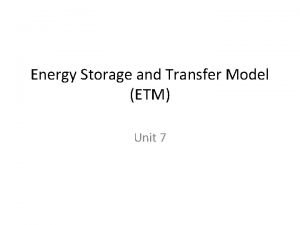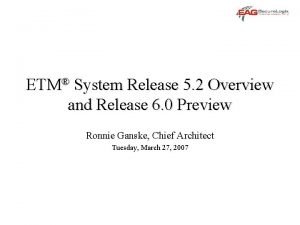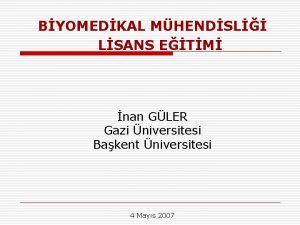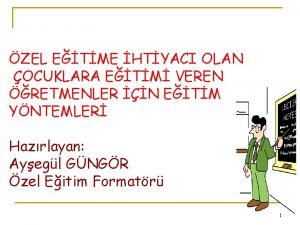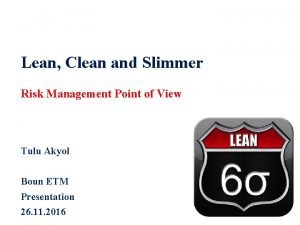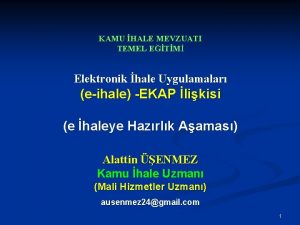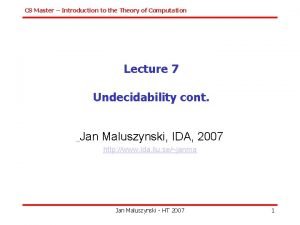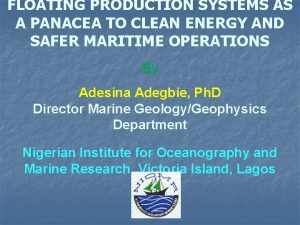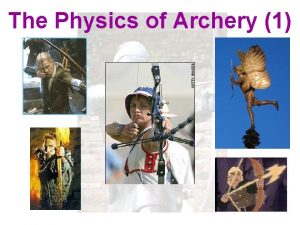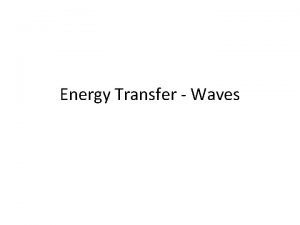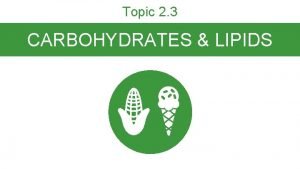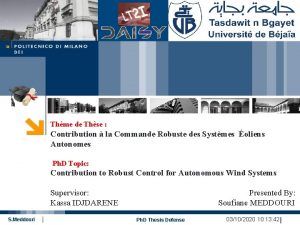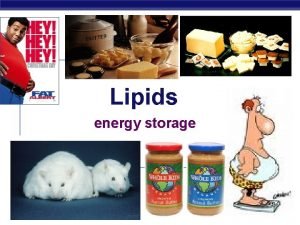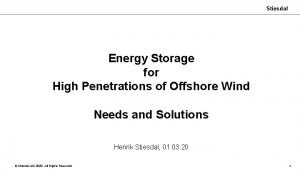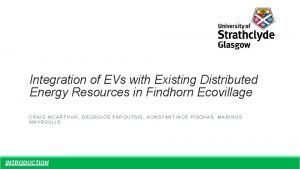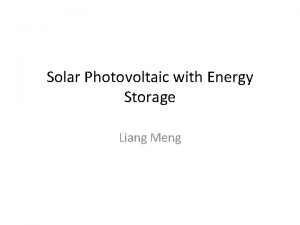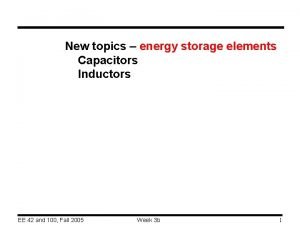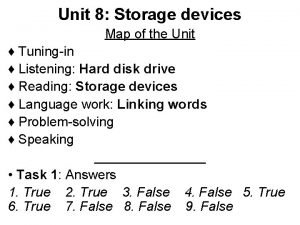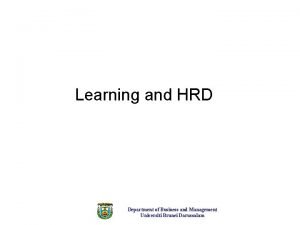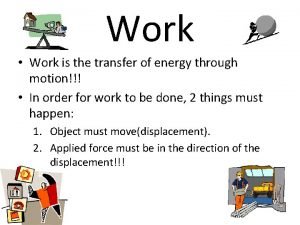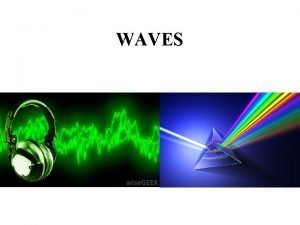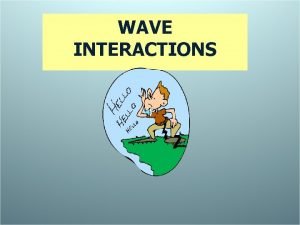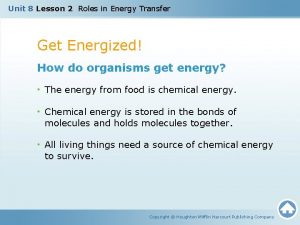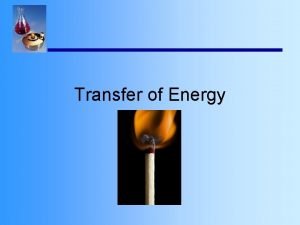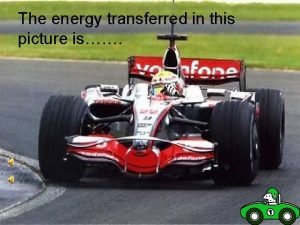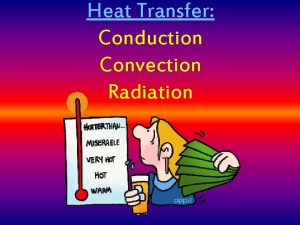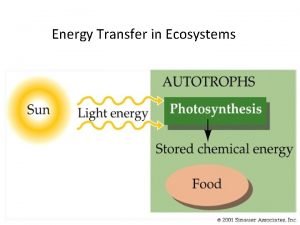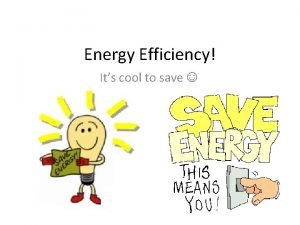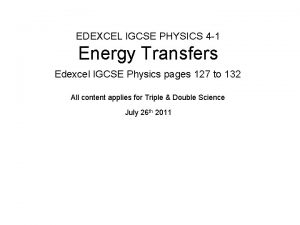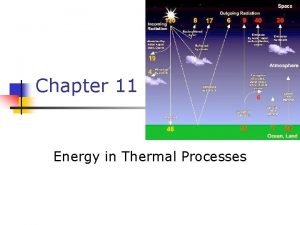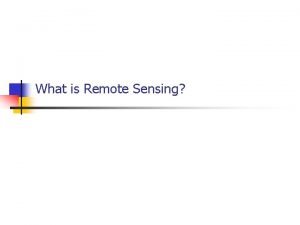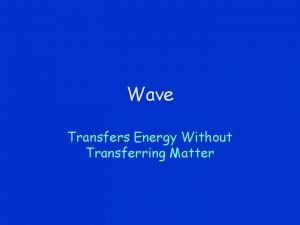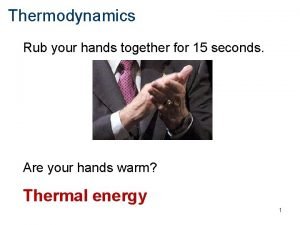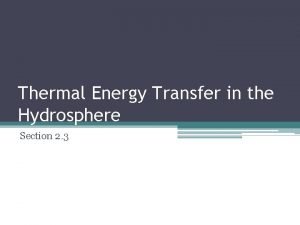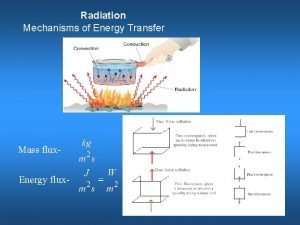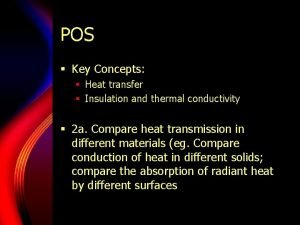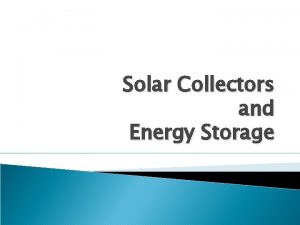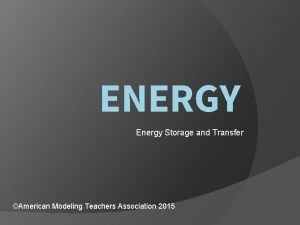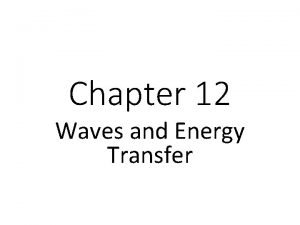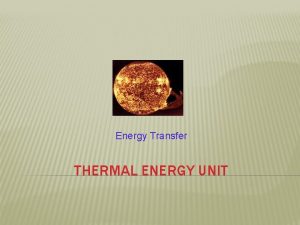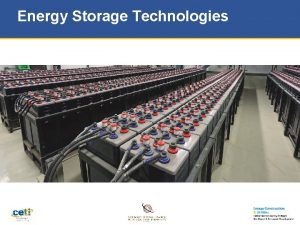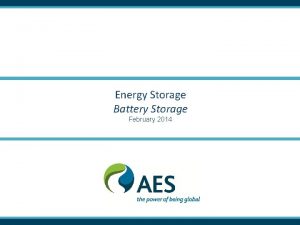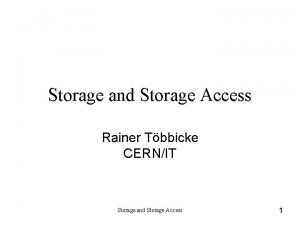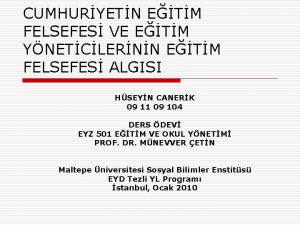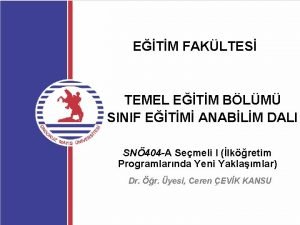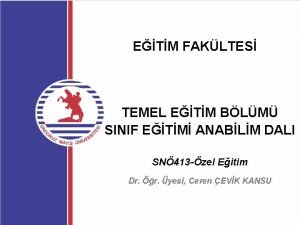Energy Storage and Transfer Model ETM Unit 7









































































- Slides: 73

Energy Storage and Transfer Model (ETM) Unit 7

Key points • Energy- a conserved, substance-like quantity with the capability to produce change in physical systems • It does not come in different forms… it’s just energy. It’s stored in different containers. It can be transferred from container to container and split between them. – Thinking this way diverts your attention from the changes in matter that we CAN describe.

Describing the Interaction between energy and matter • Think money – We have money and it’s just money, no matter how you put it – But we put it, store it, in different spots- credit card, debit card, checking account, savings account, cash, coins, your wallet… – It’s still all money, the only thing that changes is how it is stored. • Energy is the same way

Describing the Interaction between energy and matter continued • We create various "accounts" (or storage modes) in which energy can be stored in a given system • It can be transferred from one account to another as some aspect of the system undergoes a change • It can be transferred between system and surroundings via several mechanisms, although "working" (W) is the primary transfer mechanism used in this unit

Energy Storage • Energy is not disembodied; it is either stored – In an object • Labeled kinetic energy when the object is moving • Labeled elastic energy when it undergoes a restorable deformation – By a field • Gravitational, electric, or magnetic • Labeled potential energy

Kinetic Energy - EK or KE • Energy stored kinetically • Energy of motion • Located within the moving object

Chemical Energy - EChem • Energy stored chemically • Stored in molecular and atomic bonds • When you break the bond and form new bonds which require less energy to make, the difference is transferred to other “containers”

Gravitational Potential Energy – Ug; UG • Energy stored gravitationally • Where is this energy stored? – Within the ball? – Within Earth? – Stored within the field – stored relative to GF • What does GF look like? – GF lines vectors pointing towards center of Earth

GPE Newtonian View Why is NULG and all other field forces modeled as an inverse square law? We live in a 3 d universe, so the field will decrease in strength as you move outwards (in one dimension), but that strength must be distributed over the 2 d space of a sphere – the surface area of a spatial sphere • Which is 4πr 2

GPE Relativistic View • Mass curves/bends spacetime • We still see the surface area of sphere (kind of), Newton’s calculations were pretty good but relativity gives us more accuracy (and an actual explanation for gravity)

Potential Energy in general • Usubscript • Energy of an object due to its position relative to a field force or due to that system’s current state relative to its rest state • Others? – Electric Potential – Magnetic Potential – Chemical Potential – this is Echem

Thermal Energy – ETherm; ETh; EInt • Energy stored thermally or internally – can be described through its temperature, but it is NOT the temperature • Stored in vibrations or kinetic/potential energy (movement and position) of molecules/atoms • Hard to quantify without thermodynamic equations and statistics – Why?

The Law of Conservation of Energy

Elastic Energy – ESpring; ES; US • Energy stored elastically • Potential Energy stored in configuration of material • Usually deals with the deformation of the material away from its rest state • https: //www. youtube. com/watch? v=6 TA 1 s 1 o. Npbk • • https: //www. youtube. com/watch? v=Ak. B 81 u 5 IM 3 I https: //www. youtube. com/watch? v=QFl. EIyb. C 7 r. U

Spring F vs X graph

Hooke’s Law • Think about the equation of the best fit line (y=mx+b) – y is Force applied (N), m represents the spring constant (k), and x is how much the spring is stretched/compressed. We’ll ignore the y-intercept in this course. • F = kx. – The value of the spring constant, k, tells us how much force (in Newtons) must be applied to the spring to stretch/compress it a certain distance (in meters). So the units are N/m.

Hooke’s Law continued • Sometimes Hooke’s law is formulated as F = −kx. • In this expression F no longer means the applied force but rather means the equal and oppositely directed restoring force that causes elastic materials to return to their original dimensions. • We won’t use it this way, it’s just good information to know.

But what else can we determine using the graph?

The area under the line seems to have meaning…

The area under the line seems to have meaning… That’s a triangle: ½ b * h So. . • ½ F * x but we know eq. of the line: F = k*x Substitute in k*x for F Hooke’s Law ½ k*x*x or Us = ½ kx 2

The area under the line seems to have meaning… The area shaded represents the spring potential energy Eel = ½ kx 2 We can use this value, measured in Joules (J), a Joule is = N*m, to determine how energy is transferred to other storage accounts.

Energy Bar Charts • Energy can be stored and it can be transferred from one storage mechanism to another. • The objects involved in energy storage for a particular situation are listed inside the “System” box. • Objects transferring energy into the system, or receiving energy from the system, are listed outside the circle.

Energy bar charts • Initial quantities of store energy are represented with bars on left. • Bars of energy entering or leaving the system are shown at the circle • Final quantities of stored energy, using bars, go on the right.

Energy bar charts https: //goo. gl/i. UGPMM • The total initial energy, plus or minus any energy transferred into or out of the system through Work (W), must equal the total final energy. • This is the first law of thermodynamics and represents the law of conservation of energy.

Energy Transfer labs • Spring potential energy transferred to kinetic energy • No relationship between Energy and Velocity… but if we linearize our data by squaring velocity we get the graph on the right.

Energy Transfer labs • Analyze the slope: Now we have a linear relationship • Slope units reduce to kilograms and the value is ½ the mass of the cart

Energy Transfer labs; Kinetic Energy • General equation of the line: Ek = ½ m * v 2

Energy Transfer Labs • Spring potential energy transferred to gravitational potential energy • Analyze the slope – We see the units are Joules (a N*m) divided by meters; so Newtons (N) – Slope represents Force, in this case weight (m*g)

Energy Transfer Labs • Equation of the line tells us that energy, in this case gravitational potential energy (Ug) depends on the strength of the field and the arrangement of objects (at least two) in the field Ug = mgy • where g is the strength of the gravitational field (in N/kg), and y is the height above some zero reference position. • Remember, g= 9. 8 (10) N/kg

We now have 3 ways to quantify energy storage • Spring potential energy (Us) Us = ½ kx 2 • Gravitational potential energy (Ug) Ug = mgy • Kinetic energy (Ek) Ek = ½ mv 2

But… • How does the spring in our experiment actually store more energy? • Let’s say the force we used was constant, not changing. .

What else can an F vs Δx graph tell you? • Work is also area under F vs. Δx curve • This area represents energy transferred into the system by work

Work = ΔE = FΔx • A force does work if, when acting on a body, there is a displacement of the point of application in the direction of the force. • Energy is transferred by forces that cause displacements. • Force and motion must be in the same direction. • On a force vs position graph, this is the area under the graph.

(Alternative) Work = ΔE = FΔxcosΘ • A force does work if, when acting on a body, there is a displacement of the point of application in the direction of the force. • The “actual” equation and the one discussed on Minds on Physics. https: //goo. gl/LRbxsu • The cosΘ is in there because, in order to change an object’s energy, the force must act in the direction of motion; this equation is for a constant force • We won’t spend a lot, if any, time with angles here

Units • Force is measured in Newtons. • Distance is measured in meters. • N x m = Nm = Joules • Joules and Nm are the same things.

Check your understanding; use the work equation to determine the amount of work done:

amount of work done?

Force and Distance must be in the same direction!! • If you pick an object up, the force must be the upward force. • If you slide an object sideways on a table, the force must be the sideways force. • If you measure the distance up an incline, the force must be the one exerted in a direction up the incline.

Force – but no displacement Work = Zero

Displacement – but no force Work = Zero

Force – but no displacement Work = Zero

No Work Done! • The force (weight) is downward. There is virtually no sideways force. • The displacement is sideways. There is no downward motion. W↕ = 14 N x 0 m = 0 J W ↔= 0 N x 10 m = 0 J

How much work is done to lift a 15 N object upward 4 meters? • When you pick an object up, you have to apply a force equal to its weight (15 N). W = F x d W = 15 N x 4 m = 60 J

Energy Bar Chart Analysis • The total initial energy, plus or minus any energy transferred into or out of the system, must equal the total final energy. This is the first law of thermodynamics. • Ei + W = E f

How much work is done to lift a 5. 00 -kg object upward 4. 00 meters? • When you pick an object up, you have to apply a force equal to its weight (5 kgx 9. 8 m/s 2=49 N). W = F x d W = 49 N x 4 m = 196 J

How much work is done to slide a 15 N object 4. 0 meters sideways if the force of friction is 3. 0 N? • When you slide an object sideways, you have to apply a force equal to friction (3 N). W = F x d W = 3. 0 N x 4. 0 m = 12 J

How much work is done to slide a 15 N object up an incline 4. 0 meters long if the force the person must push with is 7. 0 N? • When you slide an object up an incline, you have to use the force up the incline (7 N). W = F x d W = 7. 0 N x 4. 0 m = 28 J

How much work is done to slide a 5. 0 -kg object sideways 4. 0 m if the acceleration is 6. 0 m/s 2? F=ma F = 5 -kg x 6 m/s 2 F = 30 -N W = F x d W = 30 N x 4 m = 120 J

Energy Bar Chart Analysis • The total initial energy, plus or minus any energy transferred into or out of the system, must equal the total final energy. This is the first law of thermodynamics. • Ei + W = E f

Remember • The SI unit for energy is the joule (J). A joule is a or .

A B C D • Rank the amount of work done from positive to negative.

• When the rubber bands are stretched, which rubber band has more elastic energy or are they the same?

• Imagine a ball on a track where no energy is transferred between the ball and the track or between the ball and the air around it (frictionless/air resistanceless). The ball starts from rest at the position labeled Start and moves along the track toward Positions 1, 2, and 3. What is the highest position the ball achieves?

• Same question – air resistanceless and frictionless environment. Does the ball make it to position 2?

Which book has less gravitational potential energy or are they the same? (Consider the reference point to be the floor. ) Which is faster if dropped?

Law of Conservation of Energy and the Work – Energy Principle Total Work (due to only conservative forces; frictionless/air resistanceless environments) always equals zero Essentially… Initial Energy = Final Energy

Complete this in your notes • A 70 kg skier starts from rest from the top of a frictionless 35° incline with a vertical height of 20 m. What is the skier’s speed just before she enters the plane? – Draw a energy bar chart to help you organize your energy storage accounts. Set Einitial = Efinal

• By how much will the spring compress? • Draw a energy bar chart to help you organize your energy storage accounts. Set Einitial = Efinal

Power The rate at which work is done or energy is consumed.

Which does the most work? Which is the most powerful?

Power = Work / time

Units • Work is measured in Joules. • Time is measure in seconds.

Common Metric Prefixes

No matter what the problem says, you must use “standard” units in the equation. • • Distance – meters (m) Time – seconds (s) Force – Newtons (N) Mass – kilograms (kg) Velocity – meters per second (m/s) Power – Watts (W) Work – Joules (J)

James Watt

Watts • The unit was names for James Watt, the inventor of the steam engine. • Watts engine was better than the current method getting work done (horses). • To help sell engines, Watt developed a way to “rate” their abilities.

Rearranging the Power Formula • The power formula can be rearranged into three common forms. They are mathematically equal, but they look different and contain different variables. • They are useful for different problems, depending on what is “given” in the problem.

Relates Power to Work and Time. Relates Power to Force, Distance and Time. Relates Power to Force and Velocity.

How long will it take a motor, rated at 200 W, to do 1800 Joules of work?

How much power is used to lift a 15 N object upward 4 meters in 20 seconds?

At what speed can a 1000 W motor lift a 25 -kg mass?

FYI • 1 N is about ¼ pound – May be helpful someday

Is it true? CER • Claim: A 250 lb football player, running 15 mph has more kinetic energy than a bullet fired from an AK-47 rifle. • Research information you need to support, or not support, this claim. Yes, m/s and kg. • On a whiteboard – Provide evidence for WHAT happened – Provide reasoning to explain WHY it happened
 F vs x
F vs x Energy energy transfer and general energy analysis
Energy energy transfer and general energy analysis Energy energy transfer and general energy analysis
Energy energy transfer and general energy analysis Spor eğitim modeli
Spor eğitim modeli Secondary storage vs primary storage
Secondary storage vs primary storage Primary storage and secondary storage
Primary storage and secondary storage Etm system
Etm system Gazi etm
Gazi etm Etm hika
Etm hika öğretmenimize karşı sorumluluklarımız nelerdir
öğretmenimize karşı sorumluluklarımız nelerdir Etm hika
Etm hika Etm boun
Etm boun Etm erciyes
Etm erciyes Etm nedir
Etm nedir Boun etm
Boun etm Gazi etm
Gazi etm Brett darve
Brett darve Etm elektronik
Etm elektronik Etm temizlik
Etm temizlik Etm gazi
Etm gazi Cosc 3340
Cosc 3340 Etm nedir
Etm nedir Uses rigid metallic platters
Uses rigid metallic platters Object based and unified storage
Object based and unified storage Is a disturbance that transfers energy from place to place
Is a disturbance that transfers energy from place to place Unit 6 review questions
Unit 6 review questions Floating storage and regasification unit market
Floating storage and regasification unit market Energy transfer in a bow and arrow
Energy transfer in a bow and arrow Energy transfer in food web
Energy transfer in food web Example mechanical waves
Example mechanical waves Waves and energy transfer
Waves and energy transfer Distributed energy storage
Distributed energy storage Storage of carbohydrates
Storage of carbohydrates 2.thme
2.thme Are lipids long term energy storage
Are lipids long term energy storage Examples of lipids
Examples of lipids Why are fatty acids insoluble in water
Why are fatty acids insoluble in water California energy storage alliance
California energy storage alliance Energy storage association
Energy storage association Stiesdal storage technologies a/s
Stiesdal storage technologies a/s Exporter+energy storage system
Exporter+energy storage system Solar panel efficieny
Solar panel efficieny Supercapacitor energy storage system
Supercapacitor energy storage system Long term energy storage
Long term energy storage Stream processing engines
Stream processing engines Inductor formula
Inductor formula Basic unit of data storage
Basic unit of data storage What is the smallest unit of storage
What is the smallest unit of storage Unit 10 magnetic storage
Unit 10 magnetic storage Baldwin and ford transfer of training model
Baldwin and ford transfer of training model Work is the transfer of energy
Work is the transfer of energy Work is a transfer of
Work is a transfer of What is a repeating disturbance that transfers energy
What is a repeating disturbance that transfers energy How do waves transfer energy without transferring matter
How do waves transfer energy without transferring matter Roles in energy transfer
Roles in energy transfer Which is the best surface for reflecting heat radiation
Which is the best surface for reflecting heat radiation Trophic levels
Trophic levels What is energy transfer
What is energy transfer Energy transfer in a torch
Energy transfer in a torch Example of heat energy
Example of heat energy Rate of energy transfer by sinusoidal waves on strings
Rate of energy transfer by sinusoidal waves on strings Ecosystem energy transfer
Ecosystem energy transfer Energy transfer example
Energy transfer example Elastic energy transfer
Elastic energy transfer Microphone energy transfer
Microphone energy transfer Energy transferred equation
Energy transferred equation Efficiency of energy transfer equation biology
Efficiency of energy transfer equation biology Energy transfer comic strip
Energy transfer comic strip N-rays
N-rays Waves transfer energy without transferring
Waves transfer energy without transferring Rubbing your hands together is an example of which transfer
Rubbing your hands together is an example of which transfer Hydrosphere
Hydrosphere Energy transfer
Energy transfer Heat transfer by conduction gizmo
Heat transfer by conduction gizmo
